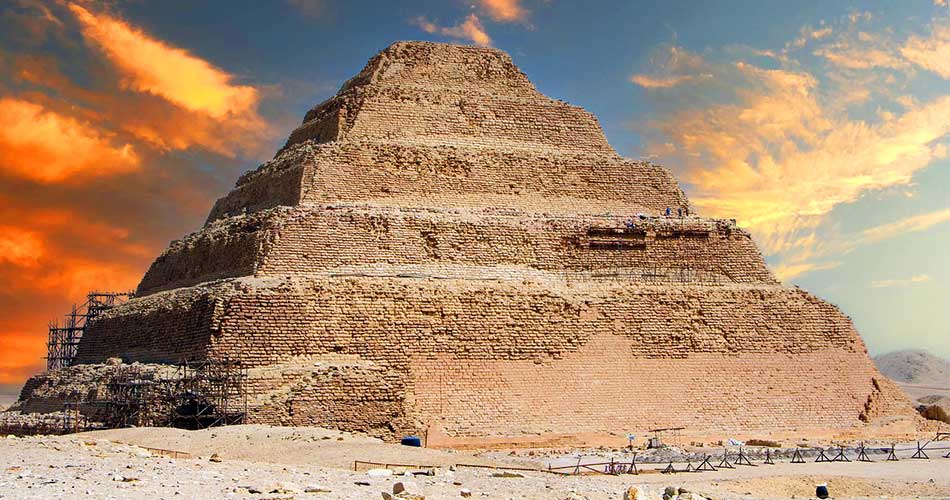The Saqqara pyramid is an ancient pyramid
The Saqqara pyramid located in the Saqqara necropolis, a vast burial ground located on the west bank of the Nile River in Egypt.
The pyramid was built during the 27th century BCE as a tomb for the pharaoh Djoser, who was one of the earliest rulers of the Old Kingdom. The Saqqara pyramid is considered to be one of the earliest examples of pyramid architecture and is a significant cultural site in Egypt.
The Saqqara pyramid is renowned for its unique design and impressive size. The pyramid is made up of six stacked mastabas, which are rectangular structures that were commonly used in ancient Egypt as tombs for the wealthy and powerful. The mastabas are arranged in a stepped pattern, creating a pyramid-like structure that rises to a height of over 60 meters.
The pyramid is also known for its intricate carvings and hieroglyphics. The walls of the pyramid are adorned with elaborate carvings and inscriptions that depict scenes from the pharaoh’s life and the various religious ceremonies and offerings that were performed in the pyramid. The carvings also include images of the pharaoh’s court, his subjects, and the gods that were worshiped during his reign.
Despite its significance and beauty, the Saqqara pyramid faced numerous challenges over the centuries. The pyramid was damaged by earthquakes, floods, and other natural disasters, and it was also subjected to looting and vandalism by various conquerors and invaders. Inrecent years, extensive restoration and conservation efforts have been undertaken to preserve the pyramid and ensure that it remains an important cultural site for future generations.
Today, the Saqqara pyramid is a popular tourist destination and a significant cultural site in Egypt. Visitors can explore the various structures and admire the impressive architecture and engineering that went into building the pyramid. The pyramid also offers a glimpse into the religious beliefs and practices of the ancient Egyptians and their relationship with their pharaohs and gods.
In addition to the pyramid, the Saqqara necropolis also features a number of other notable structures, including the Step Pyramid Complex, which is considered to be the oldest stone building in the world. The complex contains a number of tombs, temples, and other structures that offer a unique window into the life and culture of ancient Egypt.
In conclusion, the Saqqara pyramid is a remarkable testament to the ingenuity and skill of ancient Egyptian architects and builders. Its unique design and impressive size continue to captivate and inspire visitors from around the world, and its intricate carvings and inscriptions offer valuable insights into the religious and cultural beliefs of the ancient Egyptians.
Despite the challenges it has faced over the centuries, the Saqqara pyramid remains an important cultural site in Egypt and a symbol of the enduring legacy of one of the world’s greatest civilizations. The pyramid and the other structures in the Saqqara necropolis offer a fascinating glimpse into the past and serve as a reminder of the importance of preserving and celebrating ourshared human heritage.
The Saqqara pyramid is a must-see destination for anyone interested in the history and culture of ancient Egypt, and it remains one of the most awe-inspiring and impressive structures ever built by human hands. Its significance as a cultural and religious symbol of ancient Egypt cannot be overstated, and its enduring legacy underscores the importance of preserving and celebrating the achievements of past civilizations. The Saqqara pyramid and the other structures in the Saqqara necropolis stand as a testament to the ingenuity, creativity, and determination of the ancient Egyptians, and they continue to inspire wonder and awe in all who visit them.






